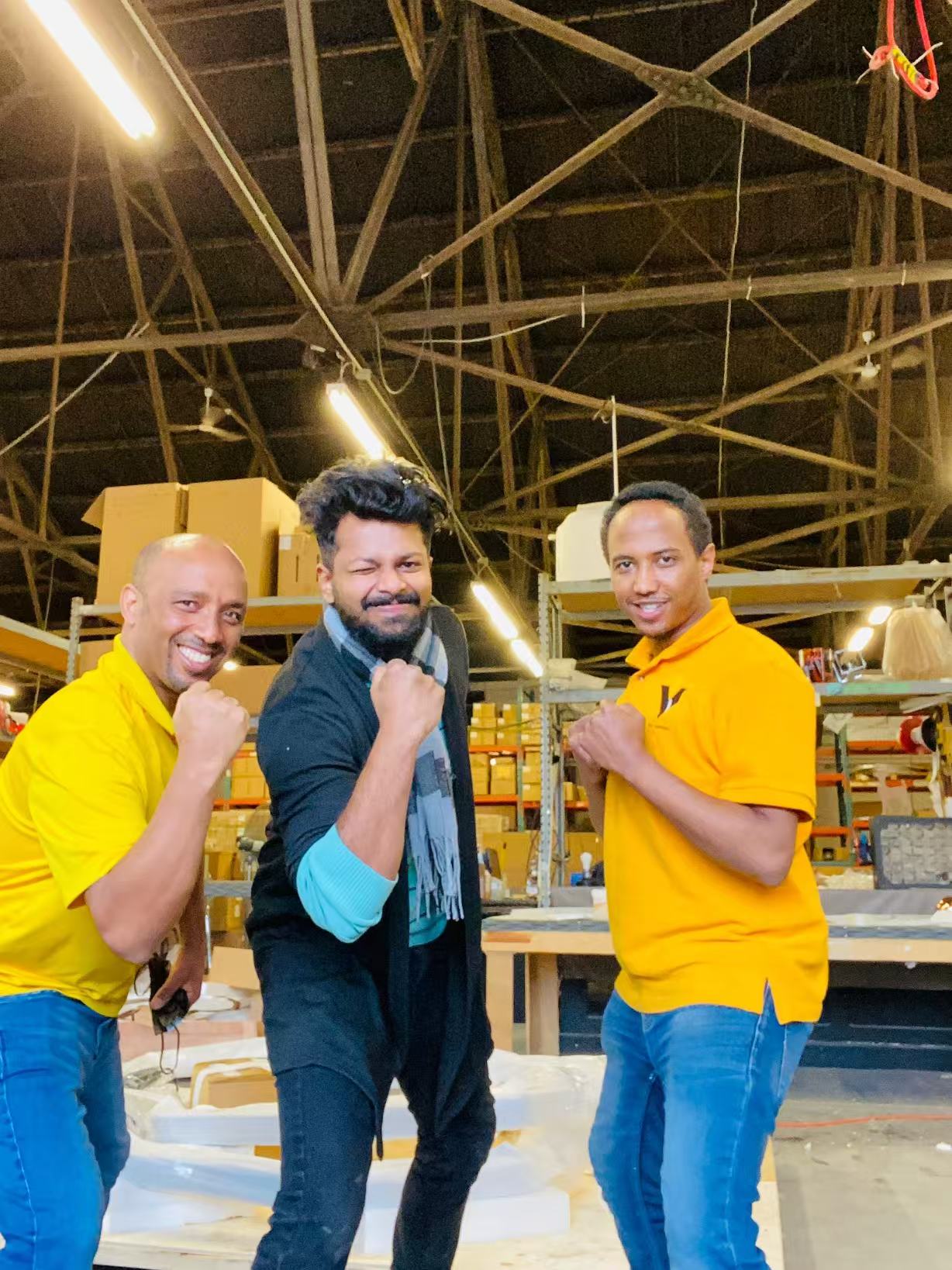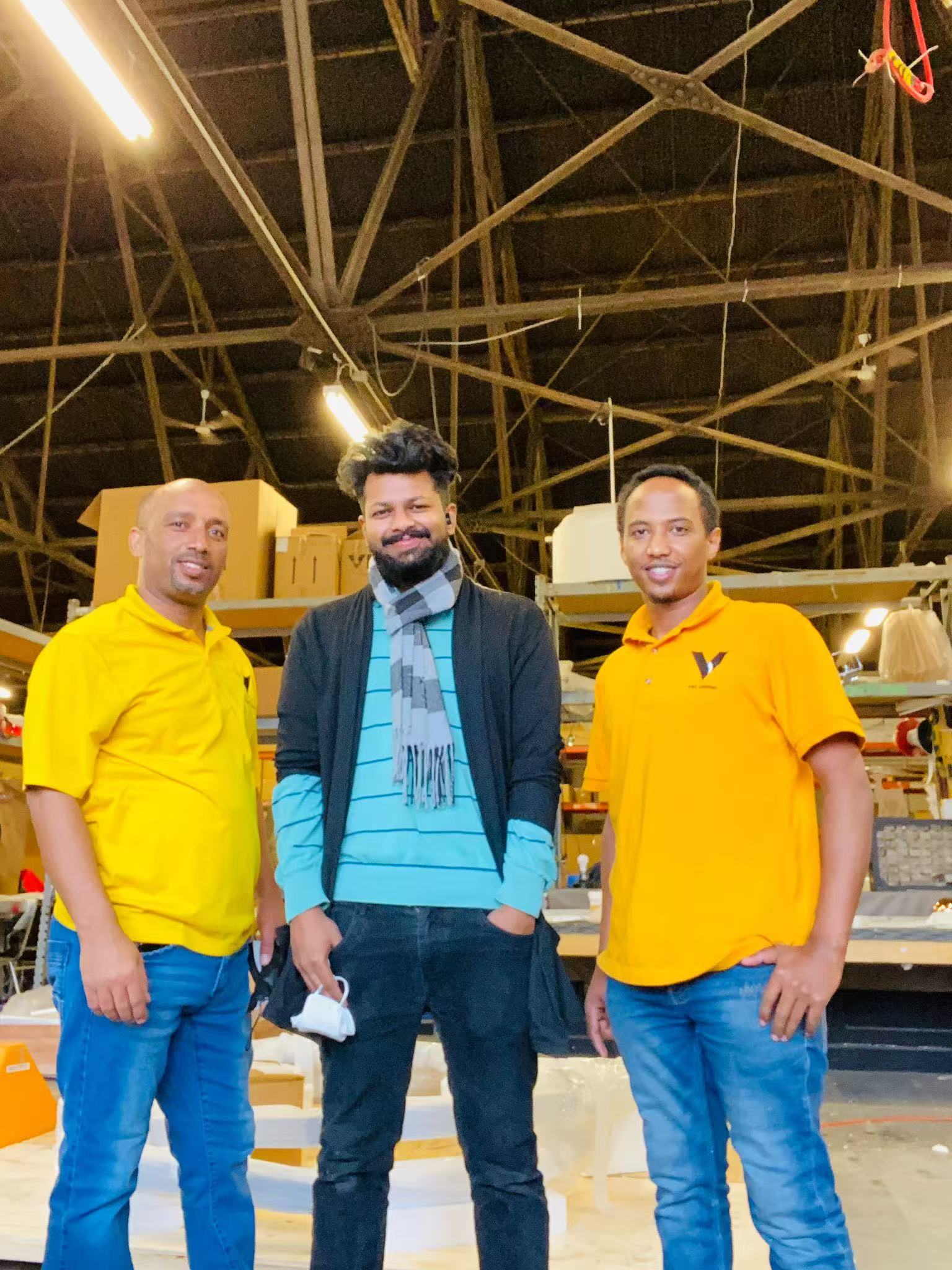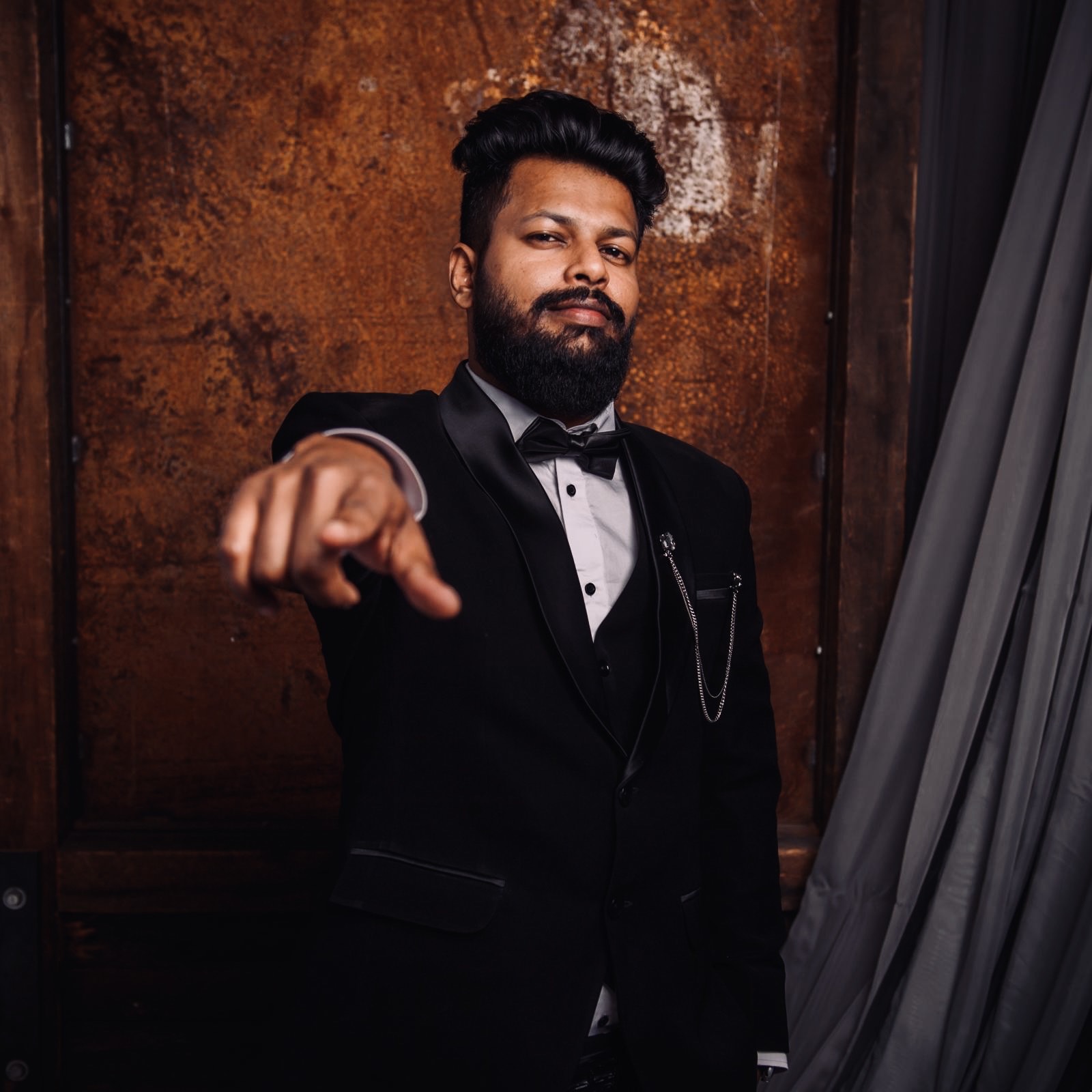We recently connected with Jessy Vallabadas and have shared our conversation below.
Hi Jessy, thanks for joining us today. We’d love to hear the backstory behind a risk you’ve taken – whether big or small, walk us through what it was like and how it ultimately turned out.
In my career, I’ve come to understand that taking calculated risks is essential for growth, and one particular experience stands out as a defining moment.
I had been working in mechanical new product development and design for several years, where my role focused on designing innovative products, managing technical specifications, and ensuring product performance met industry standards. But one day, I was offered the chance to transition into a project management position—a complete shift from my previous work. This new role would involve leading large-scale projects, and I would be tasked with managing not only the design and development but also the coordination of entire teams and resources across various domains.
The moment came when a new client approached our company with a request that was far beyond what we usually handled. They wanted to embark on a huge-scale lighting project that required significantly more resources, time, and specialized expertise. The project was well outside our usual scope, and the team’s initial reaction was one of hesitation. There were concerns about overextension, resource allocation, and the risk of failure if things didn’t go as planned.
However, I saw this as an opportunity—a chance to grow and prove our capabilities in a way that would elevate our business and reputation. I knew this was a major challenge, but I also recognized that it could be a career-defining moment if executed well.
This opportunity in project management came during the pandemic, at a time when I had unexpected free time. Little did I know that being stranded and quarantined for three months by myself would prove to be a pivotal turning point in my career. With limited distractions, I used the time to prepare for and develop my skills in project management. I studied for the Project Management Professional (PMP) certification, which I later successfully passed. The time spent in isolation not only gave me the space to focus on the PMP exam but also deepened my understanding of project management principles on a global scale, which proved invaluable for the opportunity I was about to take on.
I took a step forward, assuming personal ownership of the lighting project. Drawing from my background in mechanical engineering and new product development, combined with the project management knowledge gained from my PMP certification, I devised a plan that would leverage both my technical expertise and my newly honed project management skills. I worked closely with our team to overhaul existing workflows to ensure we could scale up effectively. Recognizing that we didn’t have all the in-house expertise, I brought in specialized consultants who could fill the gaps and provide the insights we needed.
A key part of the risk was how we communicated and involved all the stakeholders, especially the client. I knew transparency would be crucial. We made sure that everyone involved had clear expectations and understood the challenges. This open approach helped build trust, which was vital as we moved forward with such a complex task.
It wasn’t an easy journey. There were several moments of doubt, and the pressure was immense. But by staying grounded and true to our vision, the project unfolded remarkably well. We not only met our original deadlines but managed to finish ahead of schedule and under budget. The success of this project was more than just a job well done—it became a cornerstone of my career.
That project served as the foundation for much of the work I did afterward. It gained us significant recognition from the client and the industry, and it boosted our credibility in ways that would have been impossible without taking that leap. Personally, it also gave me the confidence to branch into other areas of project management, such as Risk Management and Program Management, which further enhanced my skills and knowledge in the field.

As always, we appreciate you sharing your insights and we’ve got a few more questions for you, but before we get to all of that can you take a minute to introduce yourself and give our readers some of your back background and context?
For those who may not know me, my journey into the world of project management, especially in construction and custom lighting, is a combination of education, personal experiences, and a deep-rooted passion for teamwork and problem-solving.
I moved to Canada a decade ago to pursue my Master’s in Mechanical Engineering at Carleton University. The more I learned, the more I understood that practical experience was what really moved the needle. In the classroom, theories were important, but it was the real-world application of that knowledge that truly shaped my growth. My parents, who run a construction business in India, were a huge inspiration to me. My father, a civil engineer by profession, and my mother, an architect by profession, both played pivotal roles in shaping my career path. Watching them manage projects and solve complex challenges in the construction world, I realized that this was the direction I wanted to take. Their ability to work through obstacles and build solutions left a lasting impact on me, which naturally led me to the world of project management in the construction and custom lighting industries.
In my early career, I worked as a New Product Development Manager. I was responsible for designing innovative products and ensuring their performance met industry standards. But over time, I transitioned into project management, where I began managing larger-scale projects, dealing with tight budgets and schedules, and, most importantly, engaging with clients directly. I was told by colleagues and friends that I had a natural talent for client-facing roles—my communication skills, coupled with logical thinking, allowed me to connect with people and manage complex situations.
One thing I have always found valuable is the insight I gained from my sports background. Growing up playing cricket and football—both team sports—taught me an important lesson that has stayed with me throughout my career: it’s always the team that wins, not the individual. Both these sports require collaboration, trust, and coordinated effort, much like project management. In my career, whether I’m leading a team or managing a complex client project, I believe that success comes from working together toward a shared goal. It’s about leveraging everyone’s strengths, much like the dynamic of a team on the field.
After 7 years in project management, I’ve had the privilege of solving a range of challenges—from turning dissatisfied clients into happy partners to creating processes that help our firm run more efficiently. One of my proudest achievements is assembling a team of project managers who excel at thinking critically and creatively. I hire for personality, not just skills, because I believe a person’s mindset is more important than their knowledge at a given time. Skills can be taught, but the right attitude and approach to challenges are key. During interviews, I focus less on the “right” answers and more on how candidates approach problems, as their perspective tells me much more about their potential.
What truly sets me apart is how I view challenges. I don’t see problems as stop signs but see them as guidelines for opportunity. Whenever my team brings me a problem, my first question is always, “What do you think the solution could be?” It’s not about finding the perfect answer right away, but rather cultivating a mindset that’s focused on solutions, not complaints. I believe that positive thinking and problem-solving go hand in hand, and that’s a core principle I live by.
Something I want people to understand about me is that there’s no such thing as “good” or “bad”—it’s all about perception. The way we choose to see situations can drastically change their outcome. I’ve had moments where I’ve been in situations that seemed like challenges, but with the right mindset, I turned them into learning experiences. One example that comes to mind is when I once helped a homeless person who appeared to be disabled. I gave them money and food, but later saw the same person running down the street, clearly not disabled. Initially, my first reaction was to feel deceived, but after much introspection, my perspective shifted. Instead of focusing on the deception, I realized that the person was not in a difficult situation after all. What mattered was that I acted with empathy in the moment, and that was the right choice at the time. It’s all about perspective.
In my work, I don’t just want to be seen as someone who solves problems; I want to be known for creating solutions that move projects forward. When I work with clients, I make it a point to engage with them, understand their needs, and deliver results that exceed expectations. It’s not about just completing a project; it’s about creating something that makes a real impact.
As I continue to grow, my goal is to build lasting relationships based on trust, integrity, and collaboration. Whether in construction, lighting, or any project management initiative, my focus is always on providing thoughtful, practical solutions. My brand, which I like to call “Empowered Execution,” is about creating results through confident decision-making, streamlined processes, and a commitment to proactive leadership. It’s about delivering with purpose, and ensuring every project not only succeeds but leaves a legacy of excellence and forward-thinking innovation.
Empowered Execution is a mindset I foster within my team and in every project I take on. It’s about empowering those around me to take initiative, think critically, and take ownership of their work. It’s a brand built on the idea that real success doesn’t just happen—it’s carefully planned, actively managed, and driven by a team that works cohesively toward a shared goal. My approach is grounded in consistency, building relationships that stand the test of time, and delivering projects that not only meet expectations but redefine them.

Learning and unlearning are both critical parts of growth – can you share a story of a time when you had to unlearn a lesson?
Early in my project management career, I firmly believed the old adage that “the client is always right.” I would go to great lengths to accommodate every client request, often pushing my team to meet impractical demands, even when it wasn’t in the best interest of the project or its long-term success. Over time, however, I learned that true project management is not about blind compliance; it’s about guiding clients to make informed decisions. I remember a situation where a client insisted on a change in the project scope that would lead to serious budget overruns and delays. Instead of agreeing to the change just to please them, I presented a detailed analysis of the risks, potential delays, and cost implications, offering alternative solutions that were more feasible. In the end, the client appreciated my honesty, and the project was completed on time and within budget. That experience taught me to prioritize transparency, integrity, and long-term project success over short-term satisfaction. To this day, that same client continues to come back to me with several projects, always asking for me to oversee them, which speaks to the trust we’ve built

Do you have any insights you can share related to maintaining high team morale?
Managing a team and maintaining high morale comes down to creating an environment where people feel trusted, appreciated, and empowered. One of my priorities as a leader is planning for the professional development of my team, not just within our organization, but in their broader careers as well. I want my team members to feel that they’re growing both personally and professionally, and when they move on to different roles, they do so with a sense of accomplishment and confidence in their growth.
It’s also important to recognize that celebrating successes is just as vital as learning from failures. After completing a project or hitting a milestone, I make it a point to acknowledge and appreciate the contributions of individuals. I often celebrate success with a casual Friday beer and laughing about the challenges with my peers—it’s a fun way to bond and unwind while reinforcing the collective effort behind the achievement. Equally, when things don’t go as planned, I encourage an open dialogue where we can brainstorm solutions and extract lessons learned. This keeps the team focused on growth, rather than getting bogged down by setbacks. Ultimately, a well-rounded approach—celebrating achievements, learning from challenges, and recognizing individuals for their efforts—creates a motivated and cohesive team.
Contact Info:
- Instagram: https://www.instagram.com/jesstifieddd/profilecard/?igsh=MTc3b3RzYmxrdGxmdw==
- Linkedin: https://www.linkedin.com/in/jessyvallabadas?utm_source=share&utm_campaign=share_via&utm_content=profile&utm_medium=ios_app



